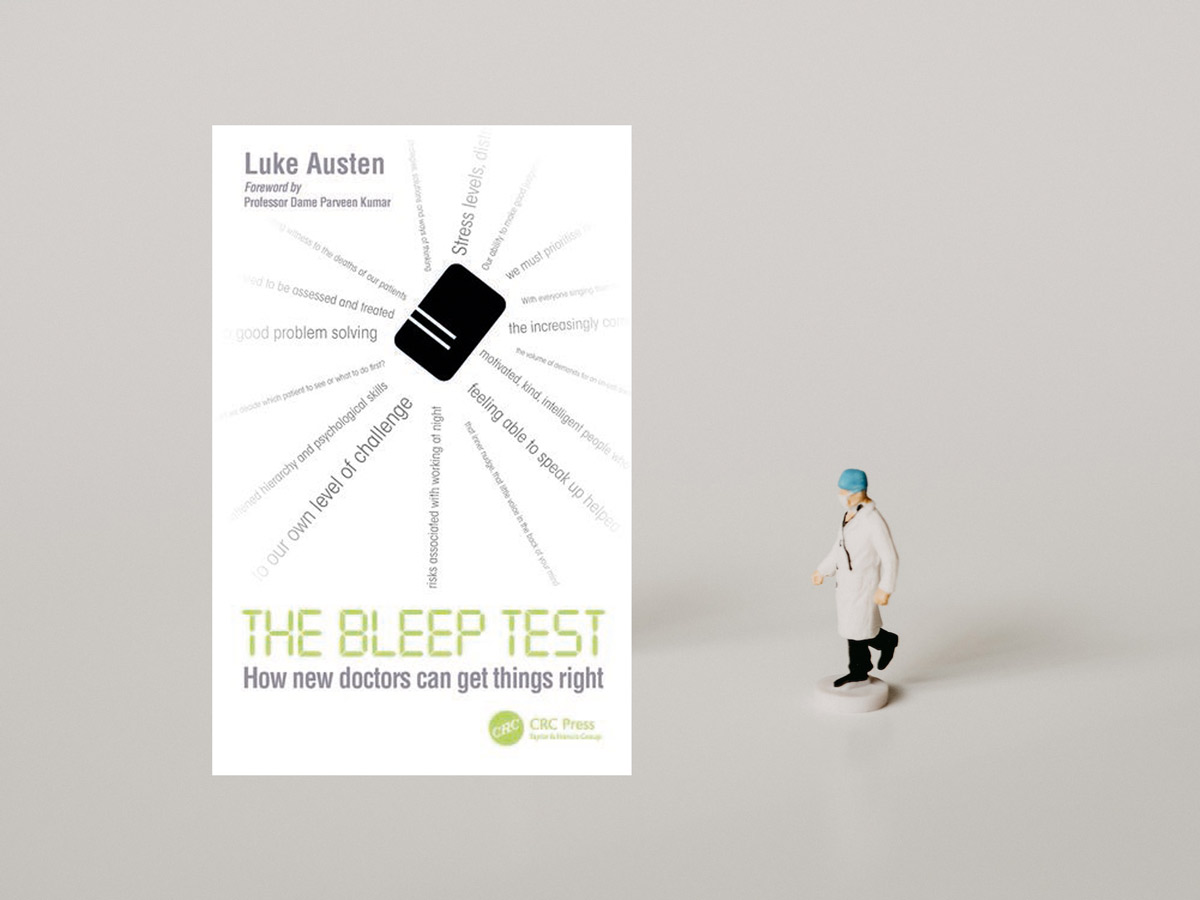John Havard has been a GP at Saxmundham Health for 37 years and feels he is just starting to learn how to be effective.
We plough the fields and scatter – and the patients reap the benefits …
Morale in general practice has never been lower, and I can say that having been a GP for 37 years. In all this adversity and negative press, the care has carried on regardless, even allowing pockets of brilliance to shine through. We have a few examples from a sleepy corner of Suffolk, which show that caring remains paramount within primary healthcare teams and that it is also mutually rewarding.
Verse 1
Registered mental health nurses (RMNs) in primary care can make a massive impact right across the board
Suffolk and North East Essex integrated care board (formerly clinical commissioning group) have struggled for years to get a workable model of RMN support into general practice while the RMNs remain employed by the Norfolk and Suffolk NHS Mental Health Trust (NSFT). Secondary care has minimal understanding about how primary care works and transfers across are obstructed, not seamless as they should be. RMNs complain that it takes them up to an hour to fill in the forms to get a patient seen by a psychiatrist, and they are unable to deal with the unpredictable rough and tumble of general practice (Suzanne, personal communication, 2023). Patients have to be booked in the day before and any unscheduled contact on the day is not allowed.
At Saxmundham Health we saw this coming and, because we have significant demand and deprivation, we needed more RMN support – immediate and not several years down the line. We took the decision to employ an experienced RMN (Suzanne) directly without any Additional Roles Reimbursement Scheme (ARRS) support and worked with her to model her work pattern in a pragmatic, varied, and efficient way. This has been great for patients and given Suzanne the most job satisfaction she has ever had. Her husband says: ‘She has never been happier in her work throughout her whole career’.
Variation
On a typical day Suzanne will contact about 15 patients, which is about three times the ‘scheduled’ number according to the NSFT. Because she is our practice-based RMN, Suzanne gets her referrals from the GPs and sees patients acutely on the day if needed. She also does some depression medication reviews and works with our practice pharmacist on these.
Suzanne works with our ‘clinical’ care coordinator (Kelly) and seeks out patient need that is not actually presenting to us. Mental health is a common reason for poor management of chronic disease and they often go out visiting as a pair. This is an opportunity for the dynamic duo to make a real difference and to make the job really satisfying. She works with one of our healthcare assistants managing our serious mental illness list, and this is fulfilling as well. This is the more traditional element of the work but the minority of her workload.
Suzanne also works with our nurse consultant on high-demand patients and offers some the ‘Green Light Trust (GLT) experience’. This is a nature therapy where patients go into the forest under the care of GLT workers and make lunch over a wood fire – and do some woodwork and commune together. Some of our most challenging patients have turned the corner with this experience and one now even works for the GLT charity!
Seeing patients improve, and the overt contentment in their chat and behaviour, is so much better than monitoring drugs! We worked out that if all our patients consulted at the same rate as these ‘frequent attenders’ then we would need 76 GPs not 5 whole-time equivalents! This is convincing evidence that we need to look for radical solutions, particularly as there are so few GPs about. The result of our initial small experiment demonstrated 32% less GP contacts post-intervention. A video on our partnership with GLT can be viewed below:
Mental health is an integral part of primary care, which is why we have brought Suzanne into the very heart of the primary healthcare team. During fundholding years we had the only full-time practice-based community psychiatric nurse in the country, but this new model is more varied and even better. I pity the practices that get given list-based session allocation of RMN time because we can manage nearly ten times as many patients over 3 days and, I would assert, much more effectively.
Verse 2
Care coordinators – what have they ever done for us? Romani ite domum
I can’t help but think of Monty Python when considering the impact of this new role in general practice. The ARRS roles (like the Romans) leave us (Anglo Saxon GPs) obliged to conform to a series of new jobs imposed from above without adequate reference to what is actually needed on the ground. The ARRS mechanism is so prescriptive that we found that it did not apply to new clinical roles that we badly needed. In our case at Saxmundham Health, we had a desperate need for a mental health nurse and a nurse consultant, but these did not fit the prescription so they just had to be employed without financial assistance.
Despite this experience, we embarked on the care coordinator role since the job was ARRS approved. But we decided to craft it with a clinical slant.
Our job description required a strong desire to make a difference to a group of patients who can be particularly challenging – while a hint of frustration in the current mode of care delivery was certainly a bonus. Although there are about a dozen elements in nationally published job descriptions, we did not want to get bogged down in administrative detail and monitoring requirements. We summarised the role as: use a combination of local knowledge combined with GP and public health data to identify and work with a cohort of people to support their bespoke and improved care.
Job monitoring
There was no pressure here as it felt crucial for Kelly to get chatting informally to wider members of the team to learn more about what was obstructing better health care for some of our patients. She had free rein to look into particular cases to see if she might be able to unlock any doors that might be denying access to better care. It is by friendly chats to both patients and experienced staff that she has been able to learn just what these impediments are, and then she has used her aptitude and skills to remove them.
As an example, if a diabetic repeatedly fails to turn up to phlebotomy appointments, she will explore this and go so far as asking when a convenient time for a blood test might be. Usually, she will then arrange to take the blood herself, but use this appointment time to also explain the importance of chronic disease monitoring so the patient will then attend routine appointments reliably. Her role is not about simply giving more in terms of time and convenience, but about sharing understanding and inspiring patients with some commitment and responsibility for their own health needs.
Sharing agreed goals and working together to achieve them is the only way forward now. The days of doctors and their teams being autocratic are long gone – we are now negotiators. We make time to put all the cards on the table so that patients can make informed choices and work with us to achieve them. The doctor–patient relationship has changed completely over one generation. I recall my predecessor instructing a patient to stay in bed until his follow-up visit. My senior colleague forgot to re-visit, but when he remembered he found the patient still in bed a month later. Nowadays we spend our time negotiating with patients and Dr Google aided by a host of other ‘experts’!
Wider job development
Kelly has realised just how many older isolated patients have come her way, which opens up the opportunity of finding ways for all the patients in the same boat to start rowing together to help and support each other. We have some social prescribing initiatives, but we have also worked with our Patient Participation Group to set up our Sunday afternoon film club. We are now on our fourth film and we are hosting 30–40 patients each time at a local community centre. The film is really an excuse for a chat before and afterwards. Kelly and some of our reception/secretarial/paramedic staff give some help and seem to enjoy putting faces to names. Our electric practice car is used to provide some free transport for those needing it.
Healthier lifestyles
Kelly has experience in low-carb diets and this, along with intermittent fasting, has been a practice project for over a year now. Many patients have lost 2.5–3 stone and the champion has lost 7 stone! He was a type 2 diabetic on a multitude of medications plus 140 U/ml insulin daily. He is now off all his insulin and free of his back and knee pain and his breathlessness.
Time for fundamental change
There is no way out of the current NHS/social care crisis without big changes – and more than just money. It is no defence to say the country has never put as much money into the NHS/social care when demand has leap frogged funding. A care coordinator can help patients to help themselves to manage their chronic disease and, in some instances, like the above, to reverse their diabetes. This clearly improves quality of life but also reduces secondary care costs and drugs budgets. The public need to be given fishing rods, not fish.
The care coordinator role helps us to understand why some patients might not respond to letters or texts and maybe try another route. So Kelly has helped immensely to tackle health inequalities in a group of our patients that really struggle for a host of varied reasons. Some examples are given in Boxes 1–3.
If the NHS is the water of life then it is currently dangerously dehydrated. Care coordinators are modest aqueducts and a small step in the right direction – but mankind needs a giant leap right now!
| Box 1. Example 1 – Young alcoholic woman who repeatedly declines smears for 12 years | |
| Process | Four befriending and educational phone calls to develop trust. Persuaded to accept help from alcohol service and our mental health nurse. Promise to chaperone the smear. |
| Result | Arrived on time for appointment (a first) and had routine smear. Off alcohol, engaging with mental health nurse and now has a part-time job. |
| Box 2. Example 2 – Young woman with learning difficulties who believes that a smear will say she has cancer | |
| Process | Telephone call leads to a face-to-face meeting to develop understanding and trust. A smear is planned along with a promise to meet at the surgery first and to chaperone. During the reminder call the day before the patient calls it all off due to terrible toothache from her rotten teeth. Unable to travel and fell out with local dentist due to missed appointments. |
| Result | Persuade local dentist to see her again on NHS and patient ends up needing extensive work. She turns up promptly for all dental appointments, and for her smear. Her child writes a thank you note using Mum’s words as Mum cannot write. |
| Box 3. Example 3 – Middle-aged woman with a history of anxiety, sexual abuse, and domestic violence who has not had a smear for >20 years | |
| Process | Made contact through telephone calls. Built trusting relationship and discovered what was important to patient. Booked appointment for smear but patient did not attend (DNA). Tried again, patient DNA. Continued with calls. Patient then agreed to come in for a smear and follow up with Kelly and Suzanne. Coming into the surgery was a huge deal for the patient as she struggles to leave the house and has been let down by agencies in the past. Building that relationship was paramount to breaking down the barriers preventing her access to health care. |
| Result | Attended and consulted with us after smear. Have applied to Ropes Trust for help with obtaining gym membership as patient used to be an athlete and would love to claim back some of her fitness. Ropes Trust may also help with transport costs as patient has difficulty accessing services due to rural locality. Physio has been arranged. Ongoing support offered, just fortnightly catch up to keep momentum and to encourage and assist over at least a 6-month period to try to establish a healthy habit/routine. Patient is grateful and determined to keep her end of the deal. |
Verse 3
Nurse consultant leading research
When I became the ‘last man standing’ in 2019 it was a shock, as my retirement position had been usurped by four younger partners. It quickly became apparent that there was no help from the clinical commissioning group and no prospective GP partners, so some self-reliance was called for. I made two key direct appointments in our mental health nurse and consultant nurse. Our consultant nurse, Suzie, was a very experienced accident and emergency (A&E) nurse and former orthopaedic directorate lead, who also did lots of out of hours with a responsibility for training GP registrars. She had previously worked for the National Institute for Health and Care Research, so it seemed that patient-facing clinical work and future primary care research would fit nicely together. And they did!
She played an important role in the COVID-19 campaign and all staff were very much involved, including our RMN who was very handy with a needle – just not used to it being so fine! By chance we were found to be the most vaccinated practice in England – minimally above other Suffolk practices who all did really well.1
Her extensive experience meant that she was a great clinical support, acting as a GP in terms of patient-facing problems. She manages our care home workload as first point of contact and undertakes weekly ward rounds along with Gold Standards Framework and Cancer Care reviews.
One of our homes is for severely demented patients with behavioural problems. There are two such homes in the county and this presented challenging issues. These patients were often violent and difficult to engage, often unable to explain how they felt when unwell.
We started out doing National Early Warning Scores 2 (NEWS2), which was very familiar to Suzie with her A&E background. Blood pressure readings were causing problems and patient distress, as were temperature readings using ear thermometers. Some research on NEWS2 was done and it became apparent that the most diagnostically accurate parameters were temperature, respiratory rate, and SpO2. It was then discovered that there was a device out there that could measure SpO2 and respiratory rate from a normal-looking pulse oximeter.
A short step, then, to use a forehead infrared thermometer to have a valuable measure of early illness with just the use of an index finger. We developed a NEWSFLASH score as a shortened but pertinent version of NEWS2, and an electronic dashboard for monitoring these patients. Carers could easily use a pulse oximeter and infrared thermometer every day, and when linked to an iPad we had set up a virtual ward.2
Verse 4
Practice nurse extended role
We have the first nurse locally to be undertaking an MSc in Skin Lesion management. She has developed a passion for this and we have bought her a dermatoscope to facilitate her development. She is now providing an enhanced dermatology service with clinics for dermoscopy and inflammatory skin conditions. It is a fantastic local service for diagnosis, reassurance, and enhancing the quality of 2-week-wait referrals.
Chorus
Never underestimate how patient health improvement impacts the mental health and job satisfaction of the clinicians trying to help. We are all in this together, and we need joined-up, properly integrated solutions like these. The country is so lucky to have such dedicated staff working in practices up and down the country who get up every morning to try to help. Everything from direct patient contact to managing letters and results is crucial, and all these diverse primary care staff deserve much more appreciation.
All things wise and wonderful — the NHS made them all.
References
1. Scotter K, Holland K. Covid-19: how did Saxmundham end up as the ‘most-vaccinated’ area? BBC News 2021; 9 Mar: https://www.bbc.co.uk/news/uk-england-suffolk-56320986 (accessed 4 May 2023).
2. Havard J, Southey SR. NEWSflash – shorter than NEWS 2 with just the headlines. BJGP Life 2020; 16 Nov: https://bjgplife.com/newsflash-shorter-than-news-2-with-just-the-headlines (accessed 4 May 2023).
Featured photo by Aniele Castro on Unsplash.








